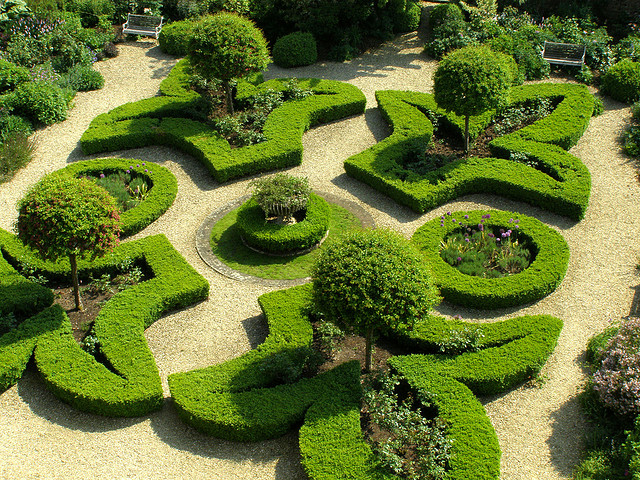Knot gardens are very formal designs that were popular in England and France in the 17th Century. Herbs were traditionally used for many knot gardens. Low clipped shrubs such as boxwood were added later. Designs were traditionally created in a square frame and were based on embroideries of the time.
Designs can range from fairly simple to very complex. Most of the designs are kept low so that the pattern is easily seen from above. Plants are planted to look as if they are intertwined and are kept meticulously clipped.
Often, colored gravel, paths, and other objects, such as statues or bird baths, are included in the pattern.
A contemporary knot garden can be simple or complex, large or small. Design ideas are only limited to the imagination.
- Start small and simple
- Consider how much maintenance will be needed
- Use plants that are easily clipped or have a mounding growth habit


Water-Wise Knot Garden Plants
Water-wise knot gardens simply substitute plants that use less water than than plants used in traditional knot gardens.
Examples of water-wise plants for use in a knot garden include: lavender, junipers, artemesia ‘Silver Mound’, purple or variegated sages, pinks (Dianthus), armeria, thymes, chives, hens and chicks, and blue fescue.
Additional Resources:
Florida: Knot Gardens
DYI Network: How to Make an Herbal Knot Garden
